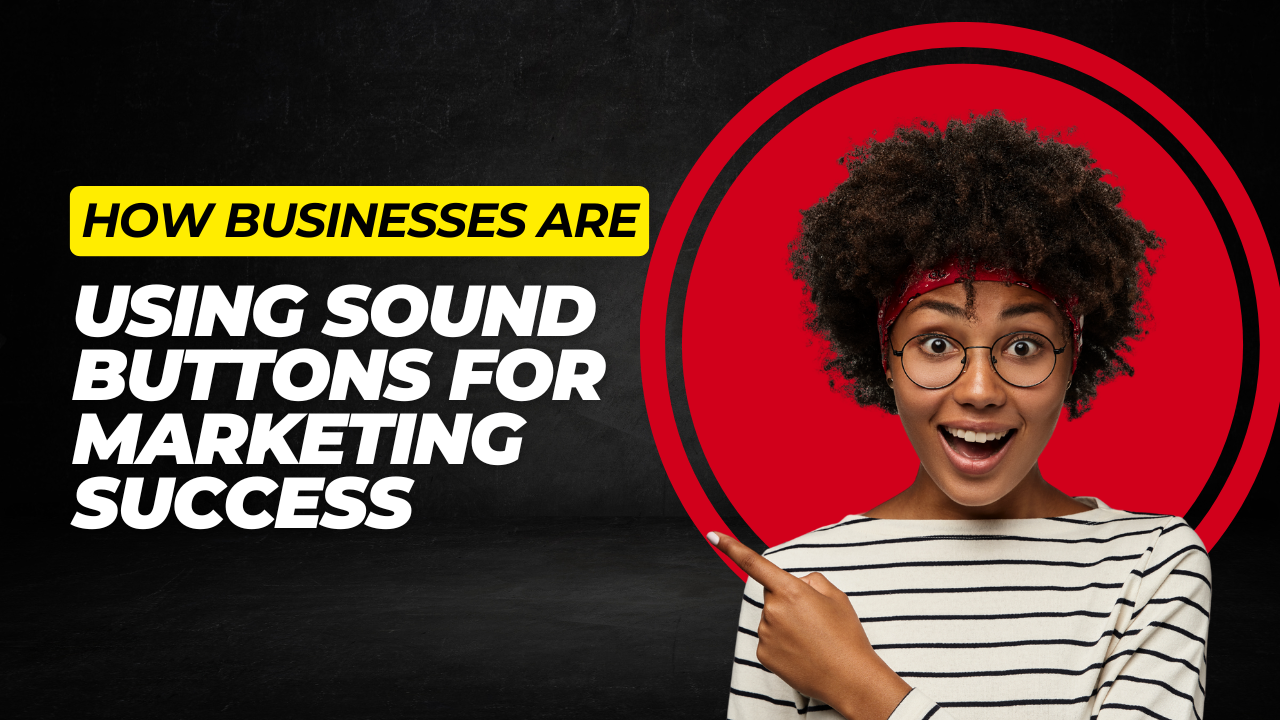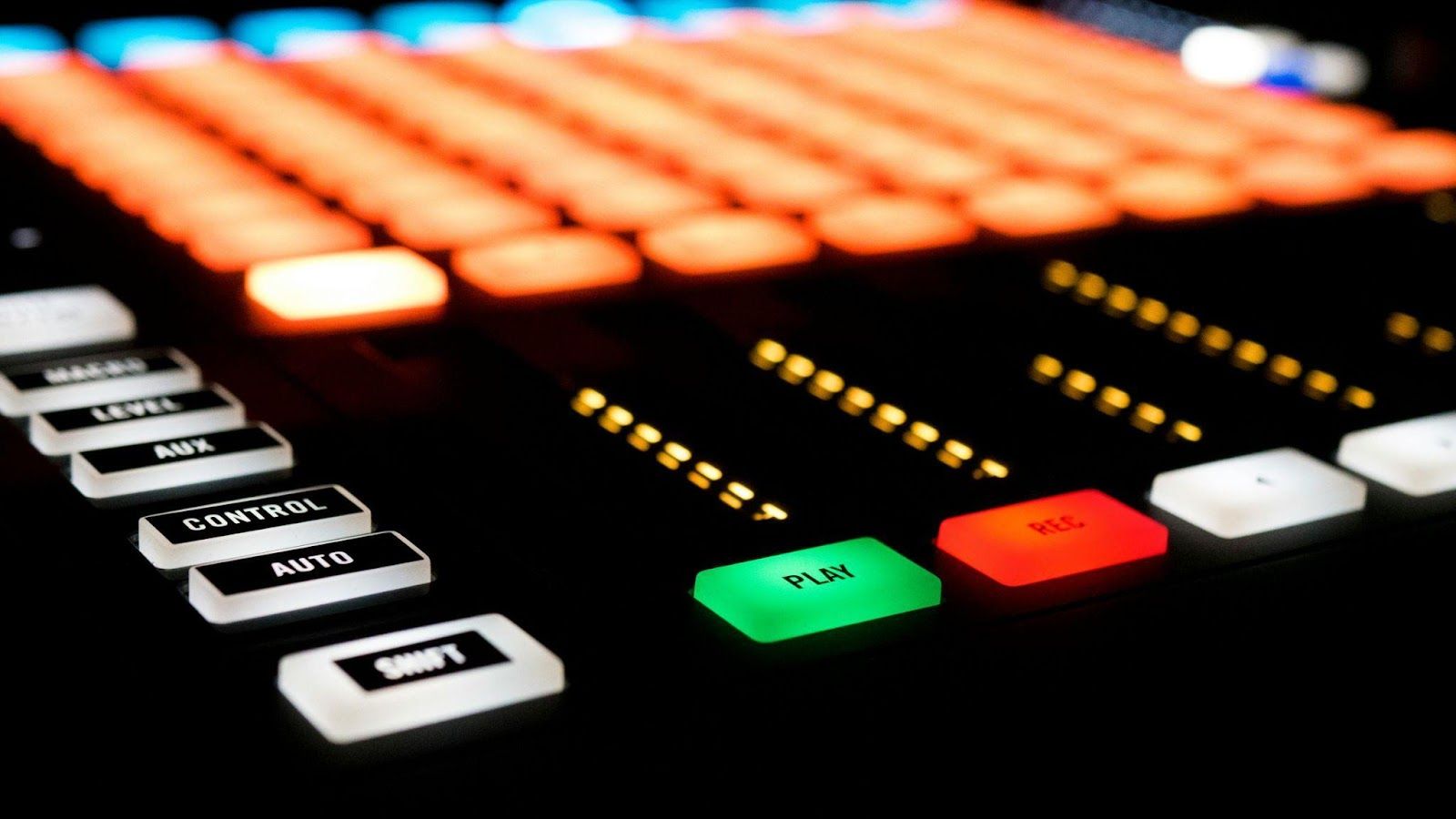How Businesses Are Using Sound Buttons for Marketing Success
Today, in the era where everything is a digital and fast paced world, businesses wrack their heads to come up with new ideas that are creative enough which can become impossible to unsee as soon as you see it. A humble sound button, a somewhat unlikely candidate for the armory of complementary tools in recent years. From being a mere meme and entertainment only sound triggers, now have taken the commerce by storm. So just how are businesses using sound buttons for marketing success; In this blog post, we will take a look at their purpose, how they fit into the larger impact of modern-day marketing strategies and whether or not lead magnets are still effective.

What Are Sound Buttons in Marketing?
Sound buttons are as simple to broadcast, just press a button and have it play a short pre-recorded audio clip. These can be a jingle, seminally spoken movie line or simply just comical sound. Sound buttons act as aids in marketing notifications, boost advertisements, enhance social media coverage and help spice up live business events or even customer interaction.
They are short, impactful and easy to use — in contrast with conventional audio marketing tools. They also help brands add a touch of emotion, wit or drama in the message without necessitating long audio tracks and costly production.
Why Sound Buttons Work in Marketing :
Playing sound has the power to evoke emotional responses and create experiences that stay with you. Audio makes a quick impression, with the human brain's reaction time to sound creating more of an impact than if purely visual cues were used; this has been proven in various studies. Let's reveal the possible secret behind why sound buttons are so effective in marketing:
Immediate Engagement: A (perfectly placed) sound catches the listener's fancy instantly.
Emotional Influence: Cheering, clapping or victory bell ring give your experience emotion.
Memorability: Obviously, catchy jingles or unique sound effects make a brand stick in human minds.
Publish everywhere: sound buttons work on social, websites and even live events
These variables make sound buttons highly valuable in our standard advertising nourishment chain.

Sound Buttons in Social Media Marketing
In the time since then, social media has exploded, with platforms such as TikTok (which is becoming a mecca for influencers), Instagram and YouTube being at their marketing zenith. All of the social media pages make good use of sound buttons to create content that can be shared or goes viral on those platforms.
For example:
For example, a brand may employ the use of a comedic sound in an audio-visual advertisement on TikTok to capture it's intended audience.
A launch product video on Instagram may incorporate an applause sound button to reveal a new item.
Many influencers incorporate sound effects in their sponsored posts.
Such small sounds, when used repeatedly but effectively over time add to the recall value of those brands in an overcrowded online world.
Sound Buttons in Video Advertising
Video ads are among the best performing online advertising formats. In-video sound buttons can be added to videos which boost the emotional connection and keeps viewers connected.
For instance:
If there is some exciting twist in a product commercial, it may be followed by that "Dun Dun Duuuun" sound.
A cheerful "Ding!" The last call-to-action message could be paired with sound.
After a video has finished, that brand may cultivate repetition by ending every single one of their videos with its own jingle.
This kind of little audio details is creating some space and individuality to video ads, which engages watchers a bit more.

Live Events and Sound Buttons
Live Events, Conferences and Product Launches: Businesses also make use of sound buttons in live events as well. Applause, drum rolls, buzzer sounds = Audience Engagement in between the event_Plug-in.
For example:
For a product launch, hitting the sound button would produce 'Tadaaaa' effect where unveiling anday new product.
At workshops or training programs, sound buttons could be put to work emphasizing important points, for which people they were being trained would otherwise have just heard the instructors' voices.
Brands could even issue a sound button so visitors were called to the booth of the trade shows.
Leading in with these audio cues makes the events feel like a worthwhile experience and does not make individuals go off-message
Sound Buttons in Customer Interaction
Businesses are also using sound buttons to help in their customer experiences. For example, Websites and mobile apps often use sound effects to indicate successful transactions, new messages, or important notifications.
An online store might play a cheerful sound when a customer successfully completes a purchase.
When a support chatbot adds new features and has some important announcements later-on it will use sound effects to alert the user.
Loyalty programs might use celebratory sounds when they present customers with a bonus point or reward.
When fleeting sound prompts such as these are added in, the feeling of digital life becomes more human and pleasurable.
Branding with Sound Buttons
Something important a lot of successful brands pay attention to is — how consistent they are with their messaging. By using sound buttons, businesses have opportunities to make a specific impression on their customers(sound identity)
Think of sounds like:
The Netflix "Tudum"
The Intel chime
Next Next post: The McDonald's "I'm Lovin' It" Song
These sounds are so distinctive and help in marketing the brands. In the same way that brands use a consistent sound for radio ads to activate reward centers with noise-activated buttons.
Customizable Sound Buttons
Among the best aspects of sound buttons, is that you can personalize them. Brands can design unique sound bites to identify their brand or deliver a message.
For example:
The sound could be someone steaming a coffee machine for example in the case of a coffee shop and there would also be variations such as barista and so on.
Exercise brand- clapping or some cheer sounds for motivation.
For example, an online service can task a pleasant chime sound to indicate the end of the action.
Over time, these unique sounds can start to define a brand as much as color scheme or logo styles.

The Psychology Behind Sound Buttons
There is an emotional reaction to sound that resonates within humans. Sounds can be a source of instant happiness, sadness or surprise. The sinister twisted marketers then use this knowledge to create melodic elevator music that will cause the desired emotional reaction.
For example:
Excitement is created through a happy / upbeat sound.
A light and soothing sound reduces mental stress.
A funky suspenseful sound seems to fit the bill.
Emotional triggers work great as tools for storytelling and brand messaging.
The Future of Sound Buttons in Marketing
The researchers argue that as technology evolves, sound buttons may get smarter and more interactive. Here is a few of them —
Speech-Operated Sound Buttons: Any sound can be integrated into an interactive button.
Smart sound suggestions: Crestron lighting automated with AI-powered system that gives the best experience.
Entertainment is a case in point: you could build applications to add sound effects typical of the stars wars movies into an virtual reality environment (VR) or augmented reality (AR).
These will enhance the sound buttons into more meaningful weapons in hand of businesses.
Conclusion
What have now become powerful marketing buttons, started as silly jokes which appeared in the corners of the internet. Leveraging their power to evoke emotions, engage audiences and elaborate brand identity has turned infographics into communist components in every contemporary marketing basket.
When it comes to a funny sound effect in a social media ad, signature jingle in our video campaign or even the cheerful notification sounds on an app – sound buttons have been helping us business connect with audiences and that too in an altogether new happy manner.
The simple sound button becomes more appreciated by brands every day, however with a myriad of new applications we are only beginning to discover the full range of what it is capable of.